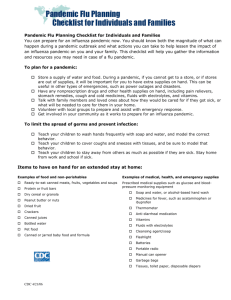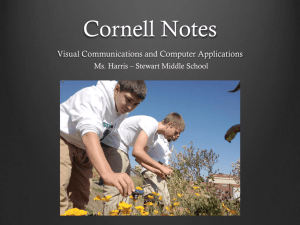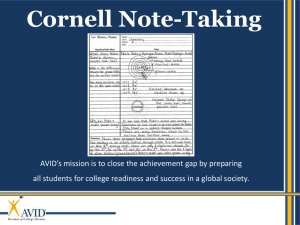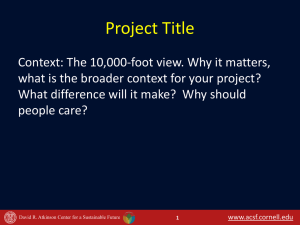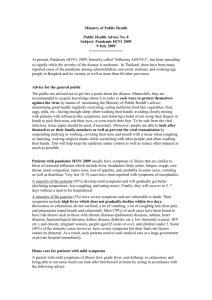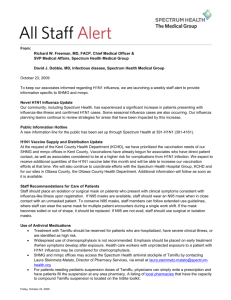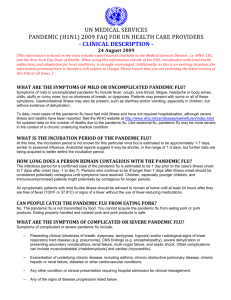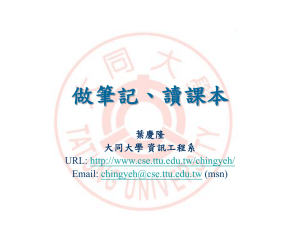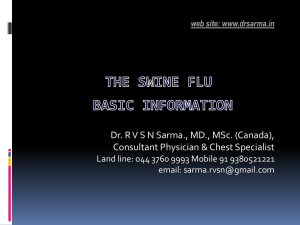Public Relations Management Case Study Presentation
advertisement
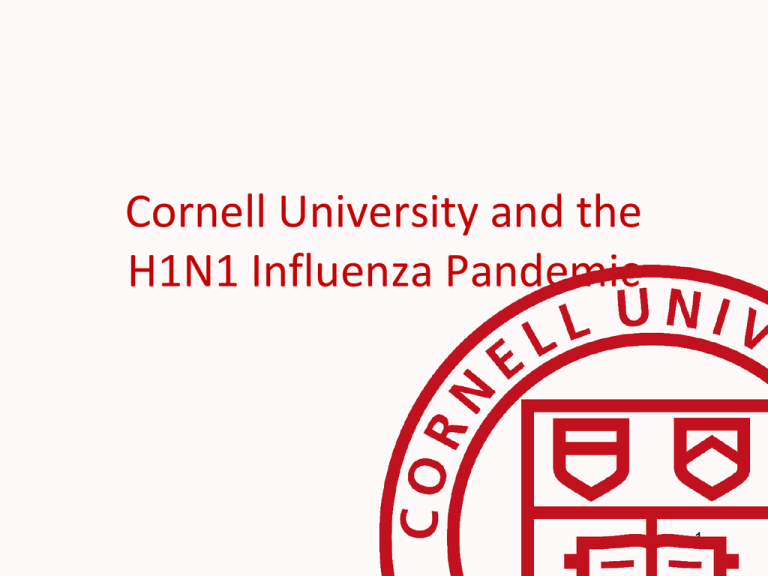
Cornell University and the H1N1 Influenza Pandemic 1 ABSTRACT • • • • August 27 - Beginning of fall semester September 11 - Student death September 15 - Approximately 600 cases Case Study: – Response to H1N1 Pandemic – Present and discuss: • Communication • Preparation • Resources – Adaptation of existing crisis management plan 2 H1N1 “SWINE FLU” VIRUS • First identified in U.S. in April 2009 • “Global Pandemic” - June 11, 2009 by WHO • Vaccines not readily available • Similar to seasonal influenza, but targets youth • Obama’s declaration in October: “National Emergency” 3 CORNELL UNIVERSITY • Ivy League • Ithaca, New York • 4,000 courses • 20,000 students (120 countries) • 15,000 faculty & staff • Strong financial standing 4 RELEVANT THEORIES • Issues Management – Risk Management • Two-Way Symmetrical Communication • Systems Theory – Unification of organization • Transparency • Uses and Gratifications Theory • Diffusion Theory 5 THE ISSUE • Cornell University adapted its pre-existing influenza crisis plan (for avian flu) to adjust it for the H1N1 emergency on campus and implement a crisis management campaign for the fall 2009 semester. The university faced a crisis situation that could have impacted all members of the university community, both on and off-site, and had potential for devastating results if not handled properly. Taking the situation seriously, Cornell acted without delay to create and implement a number of communications efforts to handle the pandemic outbreak of H1N1 on campus. 6 CORNELL’S RESPONSE • Spring 2009 - Precautionary Statement • Spring - Fall - adjusting of crisis plan “…the priorities, structures, and relationships that were established during the previous planning process positioned the university to respond to the emerging pandemic quickly and effectively…” - www.gannett.cornell.edu • Fall 2009 – Pandemic Flu Working Group – Flu Incident Lead Team 7 CORNELL’S RESPONSE • 24-hour Hotline • Dedicated E-mail • Web site; Web redirects • Social Media • Posters / Flyers • Rallying the Students • Flu Shots: Oct 19 --> from http://cornellsun.com 8 CORNELL’S REPONSE • Pandemic Flu Working Group – Helped guide university departments to create strategies. • The Flu Incident Lead Team (FILT) – Met twice a week to discuss practical issues the university faced. • The Ad-Hoc Incident Group for H1N1 – During the most turbulent time, this group met daily to direct any necessary messages to top university officials. 9 OTHER RESPONSES • Media coverage of issue nationwide • Desensitization – Excess of Coverage – Transformation with Severity • The Greeks placed a two-week moratorium on parties after Schor died • The Campus-Community Coalition held a public forum to discuss the influenza issue 10 PAGE PRINCIPLES •Tell the truth - Cornell focused on transparency at all levels •Prove it with action - Cornell followed their pandemic plan closely •Manage for tomorrow - The pandemic plan recognized a key issue •Conduct public relations as if the whole company depends on it - Realizing students were the priority emphasized appropriate response 11 ADVANTAGES / DISADVANTAGES + Pre-existing crisis plan + + + - Credibility, financial backing Partnering organizations Transparency Testing and treatment follow through are voluntary Not using popular mediums for important public Little encouragement for feedback Previous perceptions 12 OPPORTUNITIES / THREATS • Increased number of mediums • Social media • Becoming a leader and resource for campus issues management preparation • Adherence to national test/vaccination regulations • Proper and thorough self treatment? • Misinformation and inaccurate perceptions 13 CHALLENGES • Response intensity and repetition – Excessive? • Balancing: – Incitement of Fear vs. Promoting complacency – Privacy / Treatment / Education – Gravity of situation while keeping it in proportion 14 THANK YOU 15

